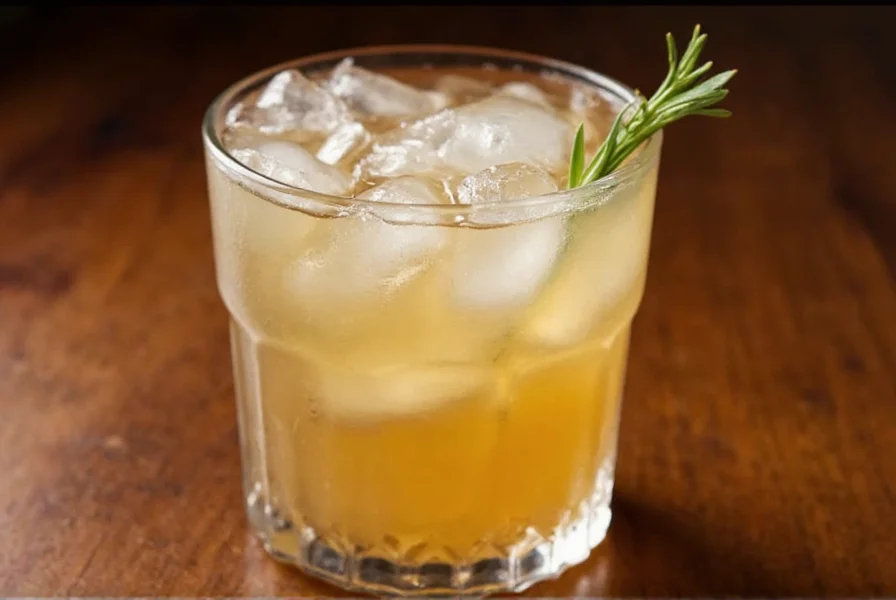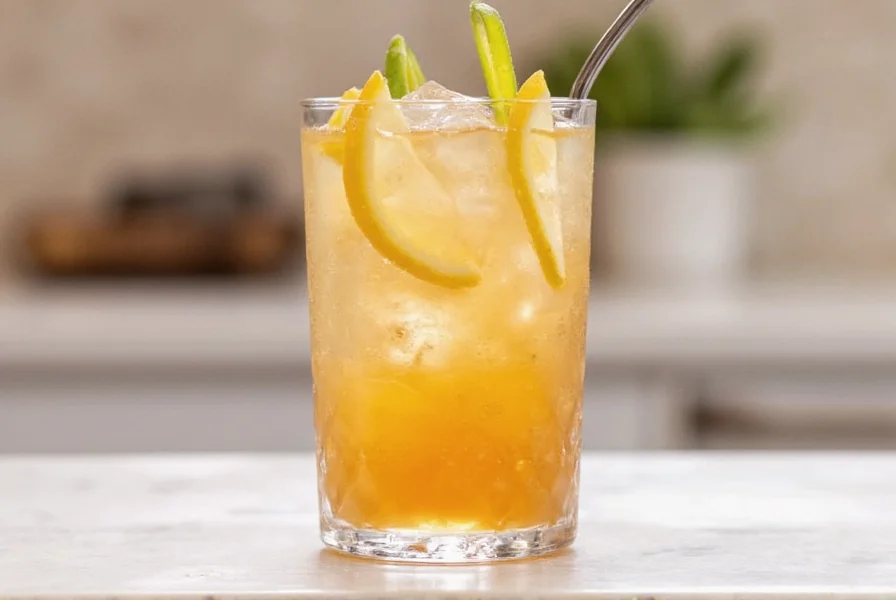When searching for ginger ale vodka information, most people want to know how to properly mix this classic combination. This guide provides everything you need to create the perfect ginger ale vodka cocktail at home, including professional techniques, ingredient considerations, and creative variations that elevate this simple drink.
The Essential Ginger Ale Vodka Cocktail
The ginger ale vodka combination represents one of the most accessible mixed drinks for beginners while remaining sophisticated enough for experienced cocktail enthusiasts. Unlike more complex cocktails requiring multiple ingredients and techniques, this pairing delivers refreshing results with minimal effort.
What makes this combination work so well? Vodka's clean, neutral profile allows the ginger ale's distinctive spicy-sweet flavor to shine through without competition. The carbonation in ginger ale creates a light, effervescent texture that makes the drink feel more refreshing than many heavier cocktails.
Perfecting Your Ginger Ale Vodka Ratio
While personal preference plays a role, professional bartenders recommend starting with these proportions for optimal balance:
| Ingredient | Standard Measure | Adjustment Tips |
|---|---|---|
| Vodka | 2 oz (60ml) | Use premium vodka for smoother finish |
| Ginger Ale | 4-6 oz (120-180ml) | Adjust based on ginger intensity preference |
| Lime Juice | 0.5 oz (15ml) | Essential for balancing sweetness |
Many beginners make the mistake of using too much ginger ale, which dilutes the vodka and creates an overly sweet beverage. The ideal ratio maintains enough vodka presence to provide structure while allowing the ginger ale's distinctive flavor to come through.
Ingredient Selection Matters
Not all vodkas and ginger ales create equally satisfying results. Understanding the differences can significantly improve your cocktail:
Vodka considerations: While premium vodkas generally provide a smoother experience, some craft vodkas with subtle flavor notes can complement ginger ale beautifully. Potato-based vodkas often have a creamier texture that works well with ginger's spice.
Ginger ale quality: There's considerable variation between brands. Traditional ginger ales contain real ginger root extract and have a more pronounced spicy kick, while many modern versions prioritize sweetness over ginger flavor. For the best ginger ale vodka experience, seek out brands with "real ginger" on the label.
Step-by-Step Preparation Guide
Creating the perfect ginger ale vodka cocktail requires attention to technique, not just ingredients:
- Chill your highball or Collins glass in the freezer for 5-10 minutes
- Fill the glass with fresh, dense ice cubes (preferably large format)
- Pour 2 ounces of chilled vodka over the ice
- Add 0.5 ounces of fresh lime juice
- Gently stir for 10 seconds to integrate ingredients
- Top with 4-6 ounces of chilled ginger ale
- Add a lime wedge or twist as garnish
The order of operations matters significantly. Adding the ginger ale last preserves its carbonation, while stirring the vodka and lime juice first creates a better integrated base. Never shake this cocktail, as it would cause the ginger ale to go flat immediately.
Creative Variations to Explore
Once you've mastered the basic ginger ale vodka recipe, these variations can add new dimensions to your cocktail experience:
- Lemon-Ginger Vodka Fizz: Replace half the ginger ale with lemon-lime soda for a citrus-forward version
- Spiced Ginger Vodka: Add 2-3 dashes of aromatic bitters before topping with ginger ale
- Fruit-Infused: Muddle fresh berries or citrus slices in the glass before adding alcohol
- Ginger Beer Alternative: Substitute ginger beer for a spicier, more robust cocktail (technically making it a Moscow Mule)

Avoiding Common Mistakes
Even simple cocktails like ginger ale vodka have pitfalls that can ruin your drink:
- Using warm ingredients: Always chill both vodka and ginger ale before mixing
- Overfilling with ginger ale: This dilutes the cocktail and overwhelms the vodka
- Skipping the lime: The acidity balances the sweetness and enhances flavor complexity
- Using old ice: Stale ice melts too quickly and dilutes your drink
- Shaking instead of stirring: Destroys the ginger ale's carbonation
Serving Temperature and Glassware
The right presentation elevates your ginger ale vodka experience. Highball glasses (8-12 oz capacity) work best as they provide enough room for proper ice volume while maintaining appropriate drink proportions.
Temperature control proves crucial. The ideal serving temperature ranges between 38-42°F (3-6°C). This requires both pre-chilled ingredients and sufficient ice quantity. Professional bartenders recommend using large ice cubes, which melt slower than smaller varieties, preventing premature dilution.
Nutritional Considerations
A standard ginger ale vodka cocktail contains approximately 150-180 calories, depending on the specific ingredients used. The vodka contributes about 100 calories per 2-ounce serving, while ginger ale adds 50-80 calories depending on brand and quantity.
For those monitoring sugar intake, consider using diet ginger ale (though this may alter the flavor profile) or reducing the ginger ale quantity while adding a splash of soda water to maintain volume. Remember that responsible consumption means limiting yourself to one standard drink per hour.
Frequently Asked Questions
What's the difference between using ginger ale and ginger beer with vodka?
Ginger beer contains more real ginger and has a spicier, more robust flavor with less sweetness than ginger ale. When making a vodka cocktail, ginger beer creates a more intense ginger experience similar to a Moscow Mule, while ginger ale produces a milder, sweeter drink. Ginger beer is typically fermented, giving it a more complex flavor profile.
Can I make a non-alcoholic version of ginger ale vodka?
Yes, you can create a non-alcoholic version by omitting the vodka and enhancing the ginger flavor. Try using strongly brewed ginger tea mixed with ginger ale, adding fresh lime juice, and a small amount of simple syrup if needed. For complexity, consider adding a dash of non-alcoholic bitters designed for mocktails.
Why does my ginger ale vodka cocktail become flat too quickly?
Your cocktail likely goes flat because you're adding the ginger ale too early in the preparation process or using warm ingredients. Always add ginger ale last, after mixing the vodka and lime juice. Ensure both your glass and ingredients are properly chilled, as warmth accelerates carbonation loss. Using fresh, high-quality ginger ale with good carbonation also helps maintain fizz longer.
What's the best vodka to use for ginger ale cocktails?
For ginger ale cocktails, a mid-range premium vodka works best. Look for vodkas with clean profiles that don't have overwhelming flavor characteristics. Wheat-based vodkas often provide a smoother finish, while potato-based varieties can add a subtle creaminess that complements ginger's spice. Avoid heavily flavored vodkas as they compete with the ginger ale's distinctive taste.











 浙公网安备
33010002000092号
浙公网安备
33010002000092号 浙B2-20120091-4
浙B2-20120091-4